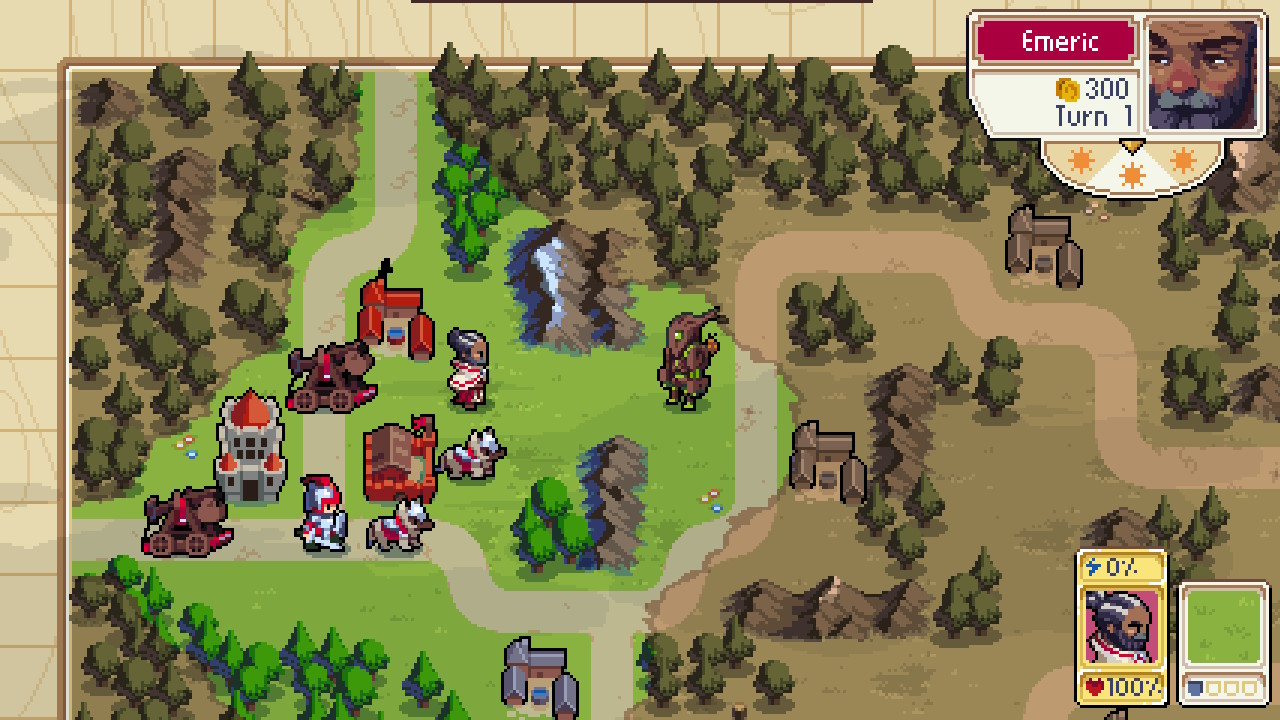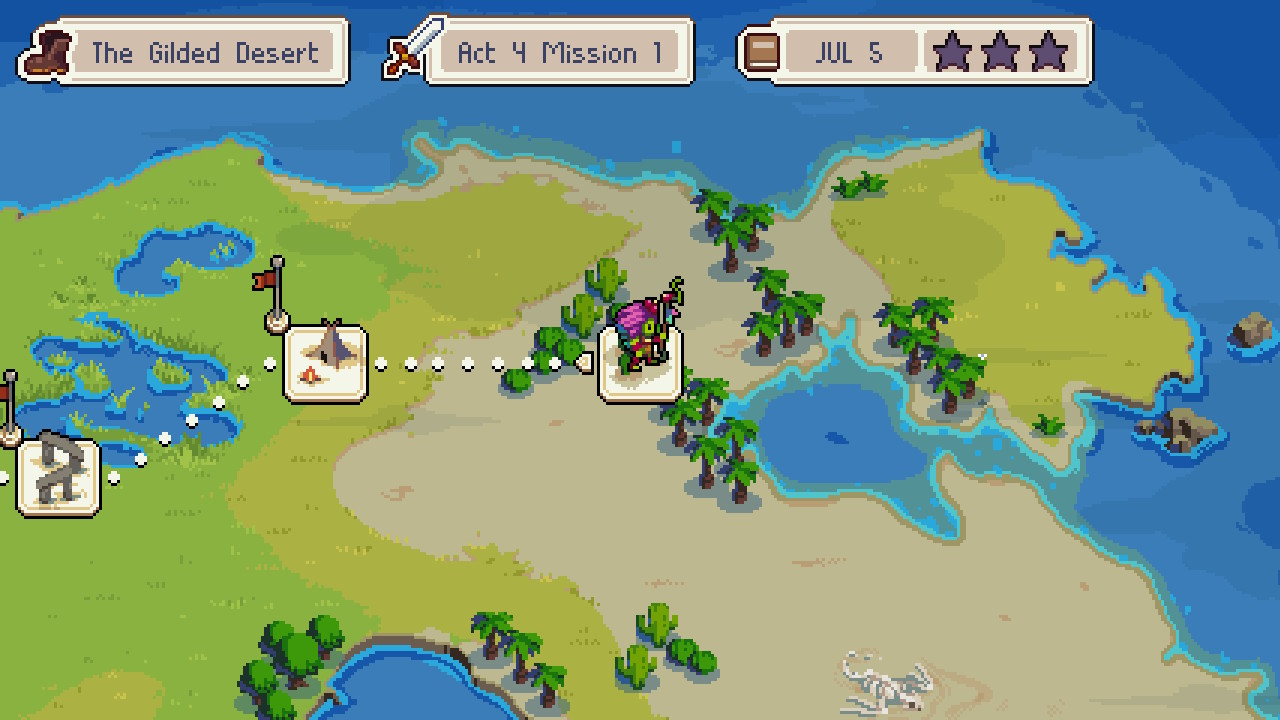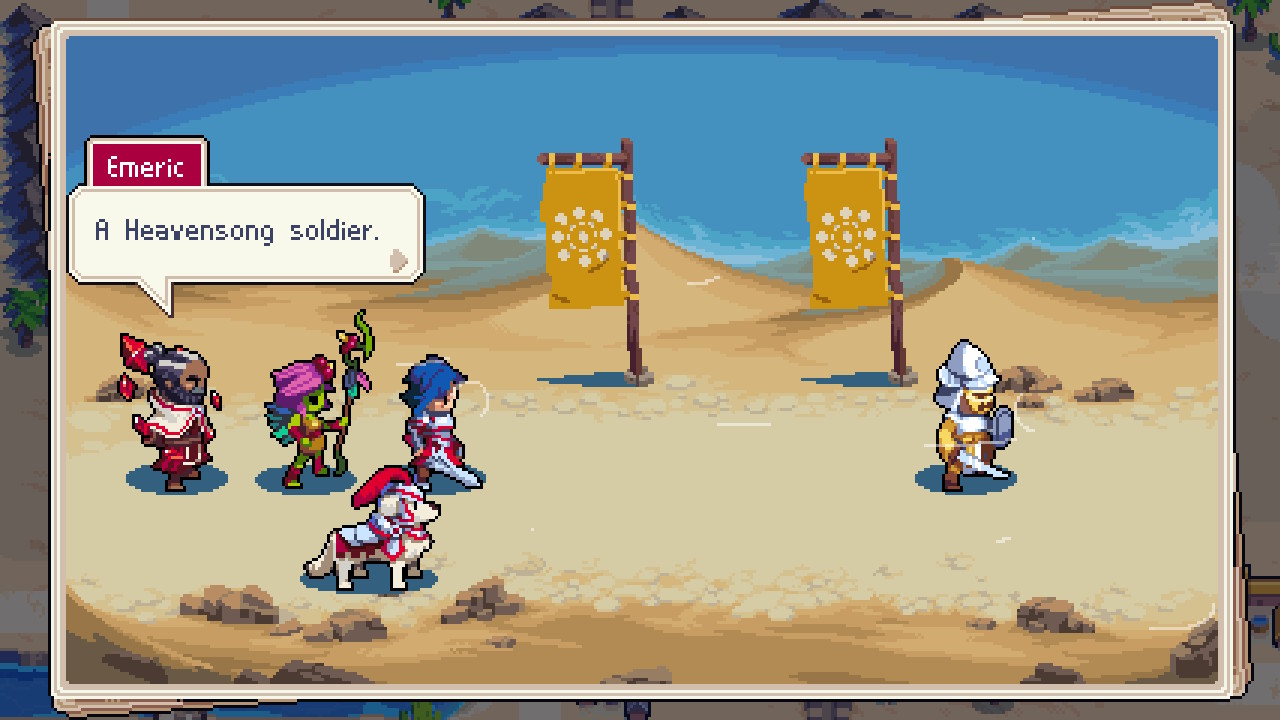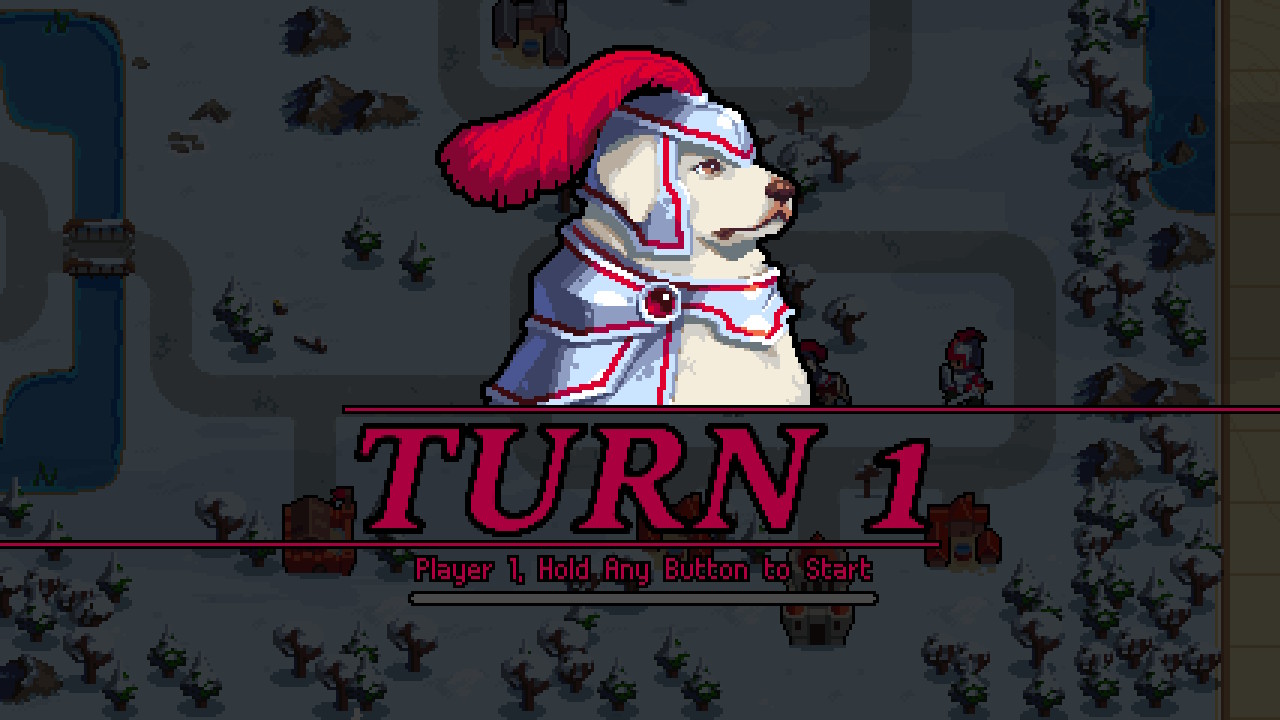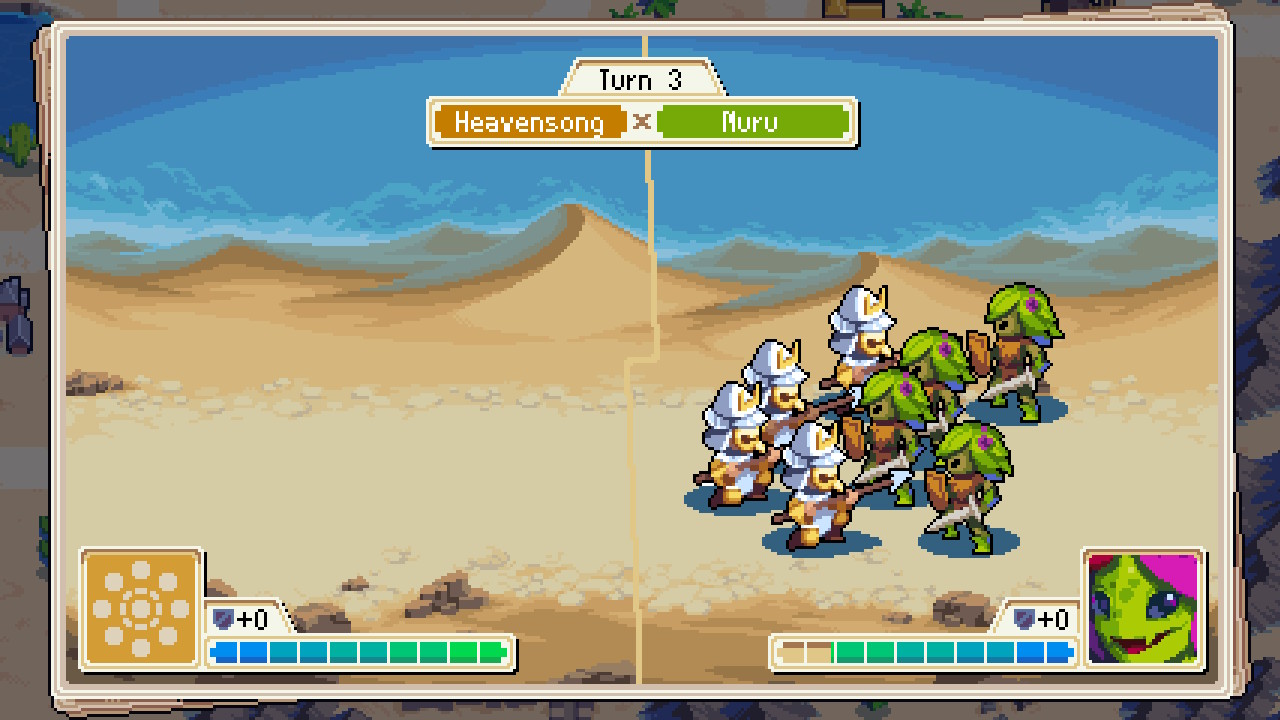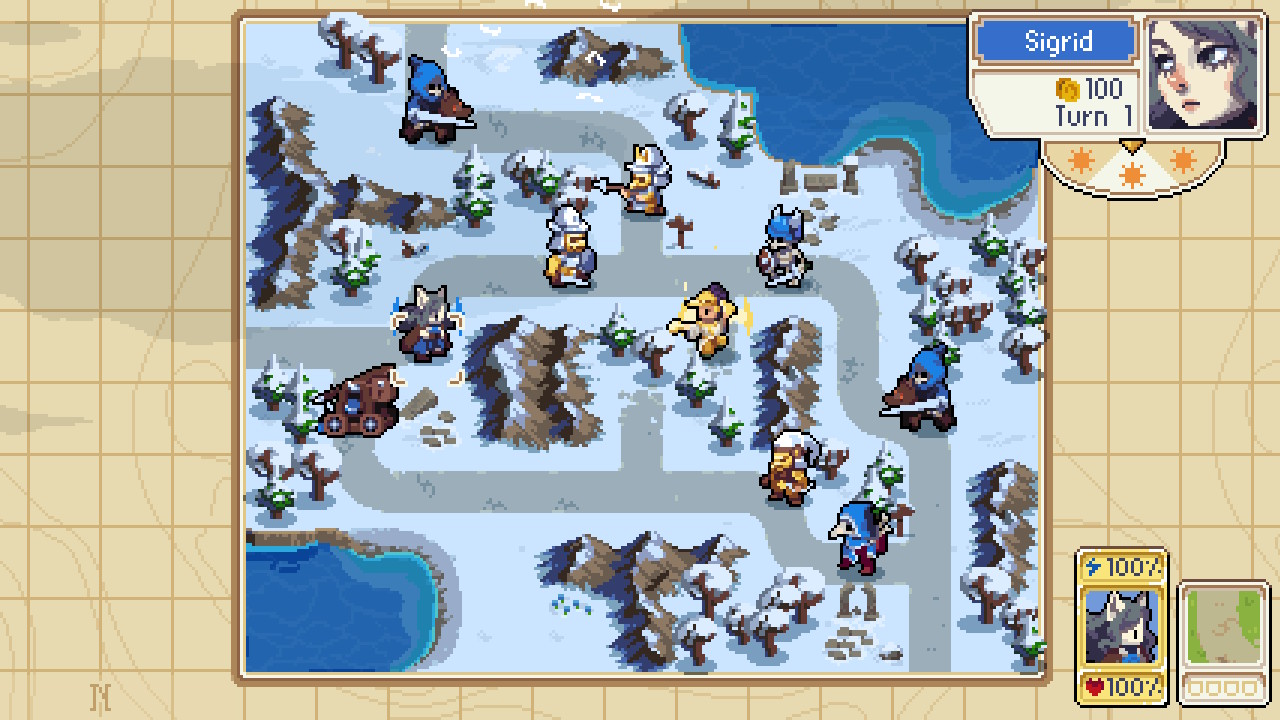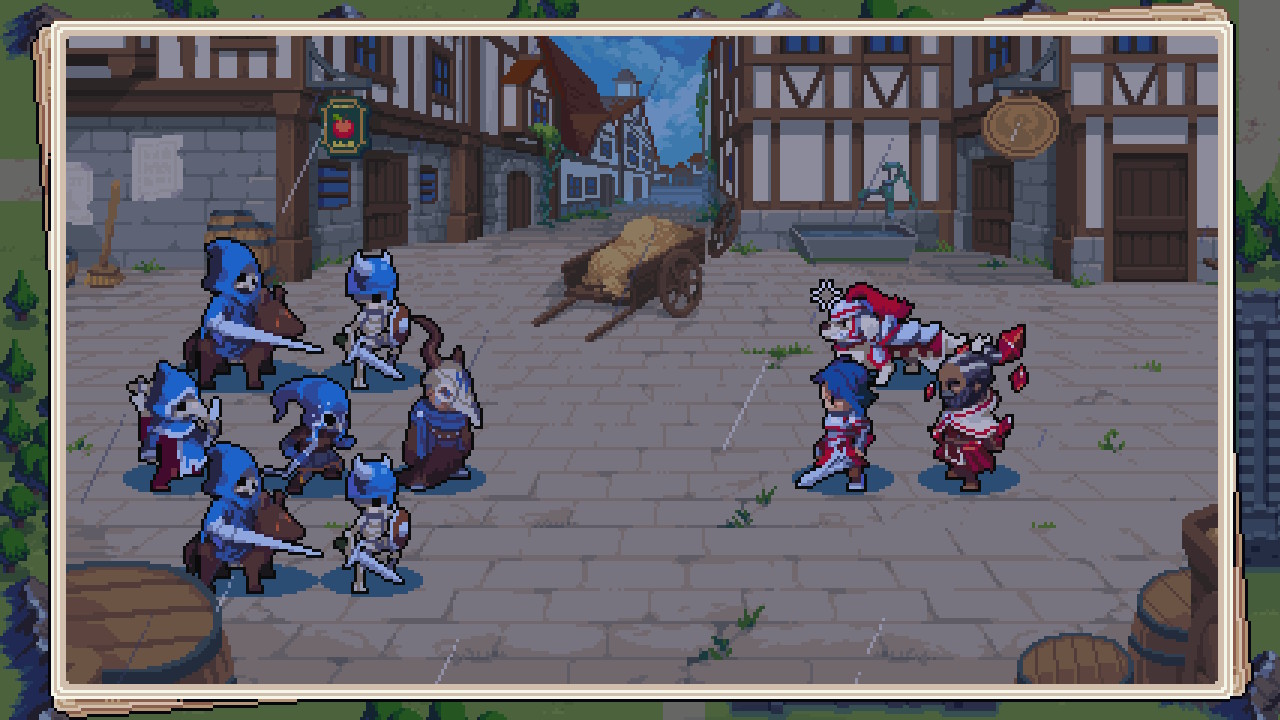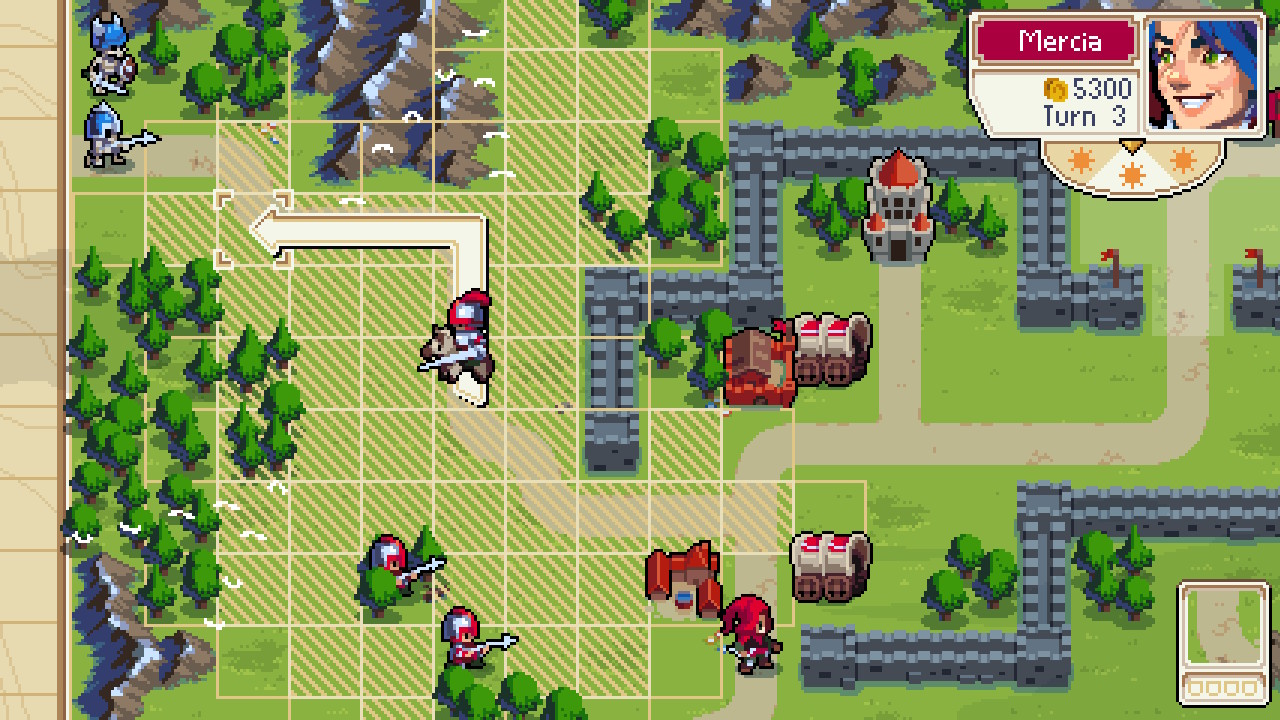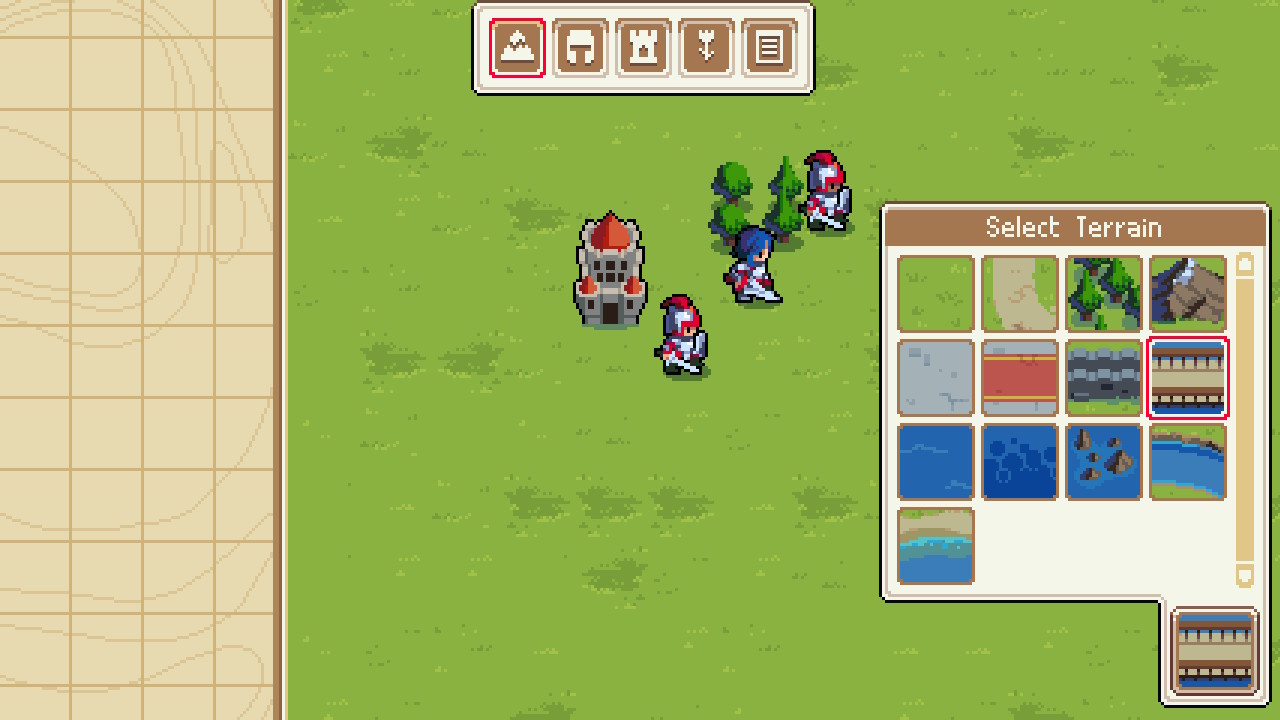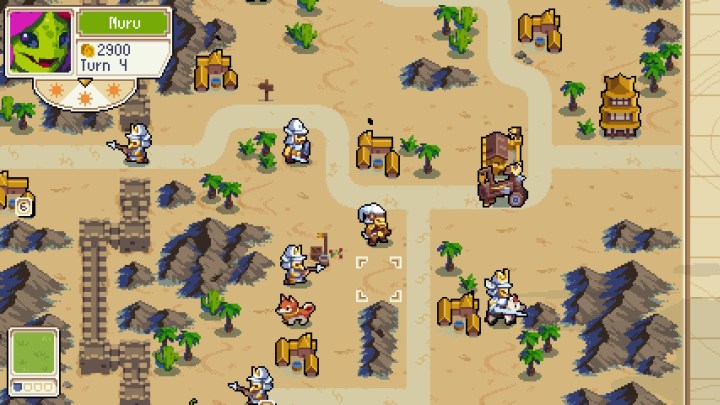
More than a decade has passed since the last Advance Wars game, and few worthy alternatives have come to fruition. Games like Into the Breach, The Banner Saga, and the Fire Emblem series appeal to similar types of tactics fans, but we haven’t seen a game that replicates both the mechanical and aesthetic magic of Advance Wars — Until now.
Chucklefish’s Wargroove, a fantasy-laced tactics romp with glorious pixelated visuals, is the Advance Wars successor I’ve been waiting for. But Wargroove isn’t a mere Advance Wars clone; it carves out its own identity throughout its lengthy campaign and gives you plenty of reason to keep grooving long after the credits roll.
Fantasy wars
Though indebted to the Intelligent Systems Advance Wars series, Wargroove is fantasy-based. Small soldiers are replaced with sword-wielding fighters, ballistas and other medieval launchers stand in for tanks, and there are even mages and flying creatures. Not to mention the battlepup commander Caesar, who is a very good boy indeed. The storyline itself is rather rote, fantasy fare about warring factions and territory control, but the dialogue is well-written and light-hearted.
Each campaign mission sees you take control of one or more commanders and their troops. From a top-down perspective, you move each character across the grid-based maps to complete objectives such as killing the enemy commander, destroying their stronghold, traveling to a safe point, or even transferring civilians to safety via wagons.

One of the aspects of Wargroove that winds up really adding strategic depth is how it handles units. You start each match with a small number of different units, each with their own movement limits, strengths, and weaknesses. Key buildings under your control can spawn new units of your choosing. As the match progresses, you’ll accumulate money by capturing strongholds and defeating enemy units. Critically, you can only create one unit from a single structure per turn, and units, of course, have different prices. Standard soldiers are cheap but horseback-riding knights and long-range machinery can cost a pretty penny. Captured structures also serve as a way to heal your troops, so spending a turn on infrastructure is more than worth it in the long run.
The one downside of how you assemble your army is that besides the commanders, each unit merely feels like a cog. The commanders have personalities, but your minions? If and when they perish, you can just buy another one. While it’s nice to not have to worry about permadeath for beloved characters, moving around nameless pawns doesn’t feel quite as consequential.
The maps themselves start out fairly small but steadily expand into massive areas filled with bodies of water, forestry, rocky terrain, and bridges that must be crossed strategically as to not get bombarded by enemy units. In a nice touch, the features of each map serve as more than just window dressing. Occupying a tree-covered spot ups your defense, but standing on and near water makes units more vulnerable. In an early set of missions, fog clouds the playable area. Sending a battlepup onto a boulder pushes the fog back, allowing you to see the enemy units and plan your moves accordingly.
Enemies pop up on the edges of the map from all directions during a match, forcing you to constantly survey the land before making your next move. Wargroove does a great job raising the stakes to keep the pressure on and excitement up.
Engaging with enemies initiates a charming battle sequence animation much like Fire Emblem. Wargroove tells you beforehand approximately how much damage you’ll deal and receive with each engagement. Each unit has strengths and weaknesses that, when exploited, can really turn the tides of battle in your favor.
Like many other tactics games, the commander (main character) is the most powerful unit. Each commander also has a special move called a groove. Grooves charge over time and do things such as heal the surrounding units, deal massive damage, or spawn a new unit immediately. On a few occasions, a groove ability saved me from near certain defeat, but knowing when to deploy it most effectively takes practice.
A sliding challenge
To be clear, on its default difficulty level, Wargroove can be challenging. When surrounded by enemies, each move you make can be the difference between victory and defeat. Early missions take anywhere from 15-30 minutes, but later missions can take upwards of an hour or more depending on how long it takes you to make decisions each turn. The length of a match, especially when you have to spend several turns simply moving towards the enemy, can get tiring. I played on the Nintendo Switch, which feels perfect for Wargroove in handheld mode, and often took breaks during particularly long missions.
If you find yourself struggling on a mission, Wargroove has a great system for modifying difficulty. You can use a sliding scale to adjust how much damage you take, money you earn, and how fast your Groove charges. It reminded me of Celeste‘s accessibility options, as it lets you fine-tune the experience to your skill level to avoid frustration. And if you’re a tactics master, you can make it much harder, too.
Units don’t level up like they do in some other tactics games, so the main mark of progression is collecting stars in each mission. Each completion earns you one to three stars depending on how you performed. The critical path took me about 15 hours, but there were more than a few side missions that I skipped, though you can easily go back and complete them.
If you build it
Wargroove‘s campaign is worth the price of admission alone, but the brunt of your time actually may be spent outside of the campaign. Along with a fun arcade mode with smaller-scale battles and a puzzle mode that tasks you with completing an objective in one turn (quite tricky), Wargroove has a robust map editor.
Though lacking in tutorials, the editor is easy to wrap your head around. The UI is set up so that making maps with a controller doesn’t feel like a pain. What’s most impressive about the editor is that it’s not just for building one-off maps. You can create an entire campaign storyline here, complete with cutscenes, that can be shared with friends via the online service. There’s even room for creating new rulesets and conditions for victory, as well as cooperative missions.
Wargroove supports cross-play between Switch, Xbox One, and PC, so it’s easy to foresee a huge library of awesome maps and campaigns available post-launch. The awesome multiplayer features extend to traditional online matches. Like some popular mobile games, you can manage multiple games at once, come back when it’s your turn, and then do something else until your competitor makes their moves. Wargroove also supports local multiplayer for up to four players, because of course it does.
Tactics fans: Wargroove is a must-play.
